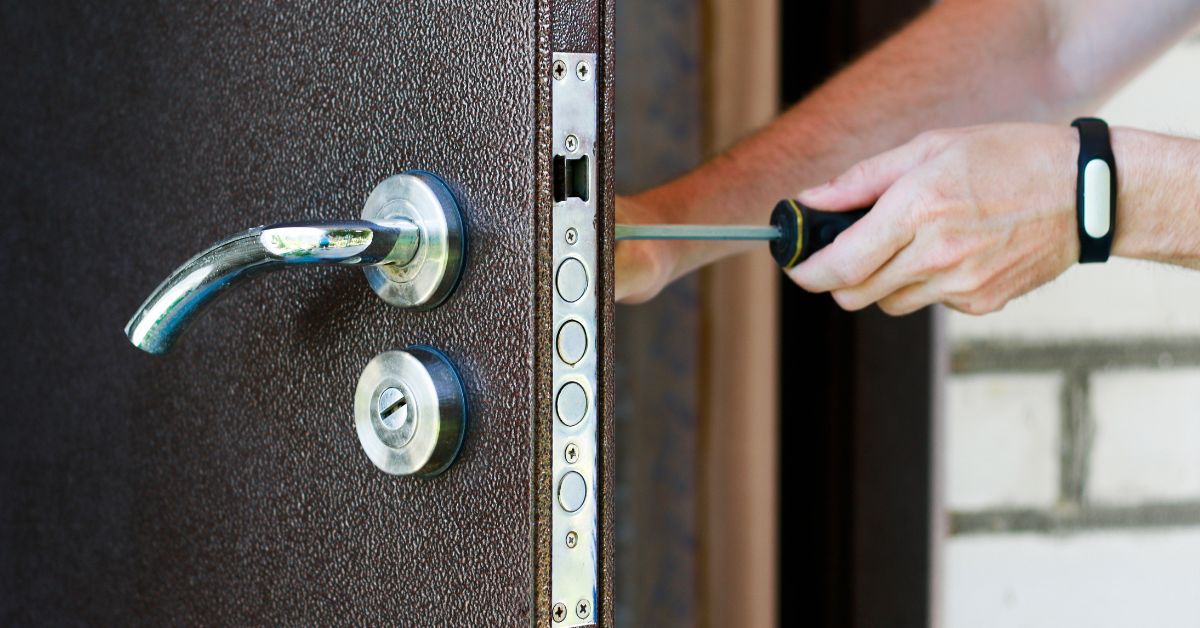What Is Anti-Ligature Door Hardware and Why Is It Important?

What Is Anti-Ligature Door Hardware?
Anti-ligature door hardware includes specially designed commercial door hardware parts such as handles, hinges, and locks. These components are intended to minimize the risk of harm by eliminating anchor points for ligature.
In this context, ligature refers to any object or part of a structure that could be used to affix a cord, rope, or string for harm or unintended use. This type of hardware is specifically engineered with rounded edges, concealed fasteners, and smooth surfaces to reduce opportunities for injury or tampering.

Why Anti-Ligature Door Hardware Is Important
Unlike traditional door hardware, anti-ligature components serve a dual purpose of functionality and harm prevention. Conventional door hardware may include sharp edges or protruding parts, such as hooks and levers, which can pose a risk. Anti-ligature solutions guarantee that every detail of the hardware is designed to mitigate these hazards.
Protects Lives and Promotes Safety
Primarily, the goal of anti-ligature hardware is to create a safer environment. For facilities that serve vulnerable populations, such as schools, medical settings, and rehabilitation centers, safety is both a requirement and a moral responsibility. By installing these specialized features, you’ll reduce the risk of patients, students, or occupants harming themselves or others.
Makes Your Facility Compliant
Many regulatory agencies, including OSHA, the Joint Commission, and other state and federal bodies, have stringent requirements to address safety risks in commercial buildings. To properly align with these codes, and avoid penalties or shutdowns, anti-ligature door hardware is often a necessity.
For example, behavioral health facilities must meet specific guidelines to ensure no point in the building can be exploited for ligature. Educational institutions, especially those housing younger students or children with behavioral challenges, are subject to safety audits that factor in harm-prevention systems, including door hardware.
Maintaining compliance with these regulations can protect your facilities legally while also contributing to a reputation of trust and care in your industry.
Enhances Functionality Without Sacrificing Design
Modern anti-ligature hardware has evolved to blend seamlessly with most door designs while still achieving its intended purpose. Whether you’re working in a high-traffic public facility or a small office, this hardware allows for durability and sophistication without compromising safety.
Minimizes Liability Risks
Within any commercial facility, accidents or harmful incidents can leave you liable. Lawsuits, worker’s compensation claims, and reputational damage all cost more than preventative measures. Thankfully, anti-ligature hardware is an effective way to safeguard against such risks while demonstrating due diligence and accountability.
Types of Anti-Ligature Door Hardware for Commercial Buildings
When implementing anti-ligature features in your commercial property, focus on the following types of door hardware to maximize safety.
Handles
Standard lever or knob handles could easily create ligature points, but anti-ligature handles are curved in design and lack sharp edges or protrusions. Some models, such as “push-pull” paddles, are completely knob-less and offer easy functionality.
Hinges
Conventional exposed hinges can be tampered with or used for harmful purposes. To avoid tampering, use anti-ligature designs that have concealed or continuous hinges that are strong enough for consistent usage in high-traffic areas.
Locks and Deadbolts
Locksets in anti-ligature hardware are designed with tamper-proof mechanisms including a cylinder and keyhole that are typically shielded to prevent accidental misuse. Most facilities add emergency override features to allow staff or authorized personnel quick access when needed.
Door Closers
Many facilities require door closers for safety and fire compliance, but these fixtures can present ligature risks. Anti-ligature door closers are concealed within the frame to make sure that no part of the mechanism could accidentally be used for harm.
Strike Plates
Anti-ligature strike plates are recessed into the door frame, making them flush with the surface. This prevents any gaps that pose ligature hazards.
Continuous Hinged Doors
For maximum safety, consider implementing full-length continuous hinges on your doors. These hinges cover the entire vertical side, eliminating all possible gaps.

Where To Install Anti-Ligature Hardware
This type of hardware is commonly implemented in spaces such as behavioral health clinics, detention centers, and educational institutions. However, it’s recently become commonplace for other commercial buildings with safety concerns.
Behavioral Health Centers
Mental health facilities need to ensure that every aspect of their space, from beds to doors, follows anti-ligature safety measures. Entry points are of critical importance, and every doorway should be outfitted with appropriate hardware.
Health Care Facilities
Hospitals, nursing homes, and clinics also benefit from anti-ligature hardware. Aside from patient areas, storage rooms, break rooms, and administrative offices also need non-protruding and safety-compliant fixtures.
Educational Institutions
Schools, especially those with younger populations or behavioral units, can improve safety significantly by opting for anti-ligature hardware instead of traditional door fixtures.
Detention Facilities
Anti-ligature solutions are a natural fit for juvenile detention centers, prisons, and holding areas where safety and security are paramount.
Public Buildings
Libraries, community centers, and government offices often serve diverse populations. To keep these spaces safe for all patrons regardless of age or mental health status, consider introducing anti-ligature door hardware.
Key Considerations When Installing Anti-Ligature Hardware
Keep these tips in mind as you look into anti-ligature hardware for your building.
Risk Assessment
Before selecting the hardware, conduct a risk assessment of your facility. Identify high-risk areas, including patient or student rooms, bathrooms, common areas, and storage closets.
Durability
High-traffic commercial facilities place considerable stress on doors and hardware. To ensure they can withstand daily wear and tear, choose products constructed with industrial-grade materials.
Aesthetics
Your facility doesn’t have to sacrifice style for safety, so look for hardware designs that align with your building’s interior design and overall aesthetic.
Staff Training and Maintenance
Make it a priority to train your staff on how to use and maintain anti-ligature systems after installation. Additionally, routine inspections can help catch small issues before they become safety hazards.
Though it’s a regulatory requirement in many places, investing in anti-ligature door hardware is also a great way to showcase your commitment to creating safe, welcoming spaces for everyone. Now that you’re familiar with what anti-ligature hardware is and why it’s important, you can establish your space as one that prioritizes accountability and care.

Author
Greg Richard
Chief Technical Officer and Founding Member of DoorHub.com